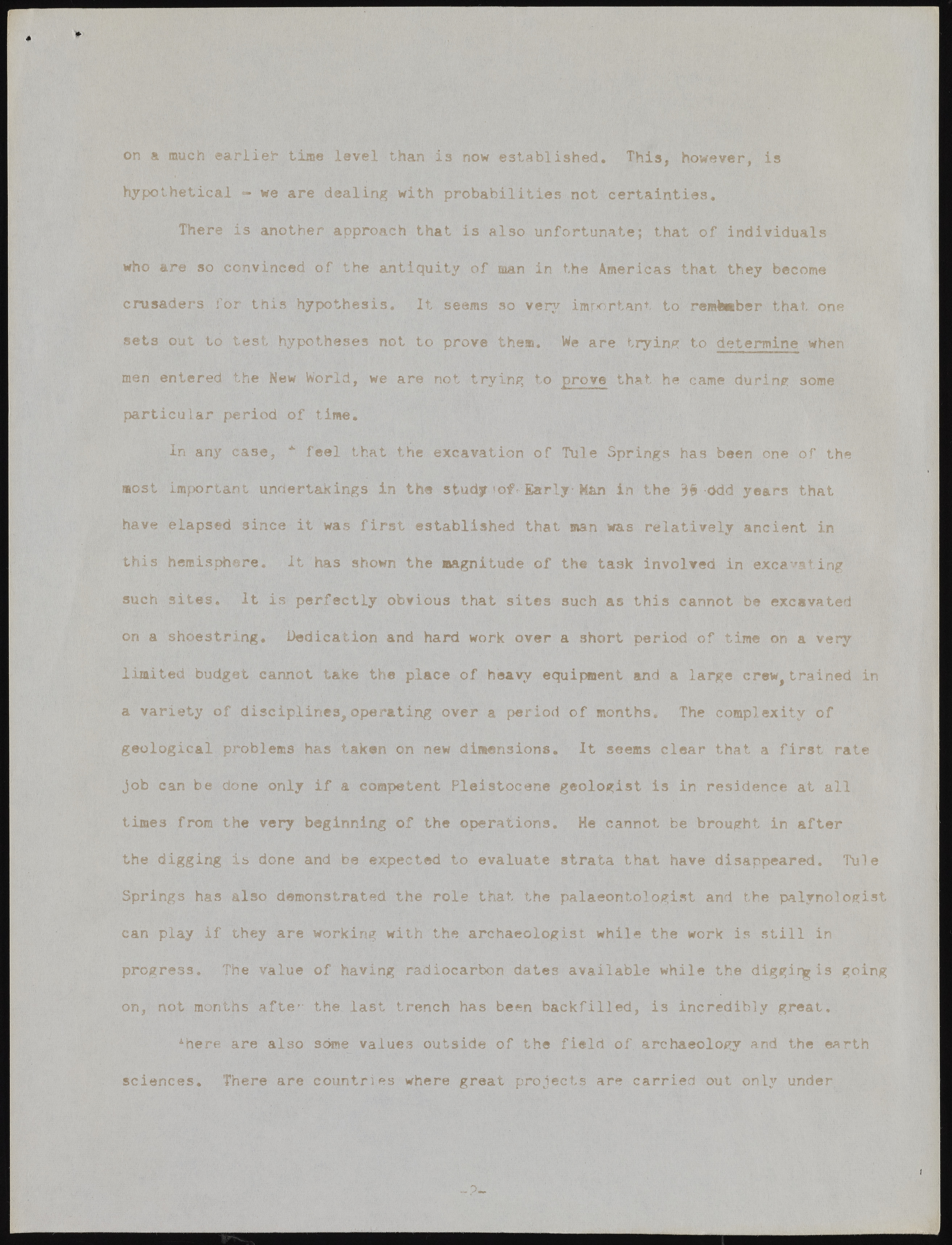Copyright & Fair-use Agreement
UNLV Special Collections provides copies of materials to facilitate private study, scholarship, or research. Material not in the public domain may be used according to fair use of copyrighted materials as defined by copyright law. Please cite us.
Please note that UNLV may not own the copyright to these materials and cannot provide permission to publish or distribute materials when UNLV is not the copyright holder. The user is solely responsible for determining the copyright status of materials and obtaining permission to use material from the copyright holder and for determining whether any permissions relating to any other rights are necessary for the intended use, and for obtaining all required permissions beyond that allowed by fair use.
Read more about our reproduction and use policy.
I agree.Information
Digital ID
Permalink
Details
More Info
Rights
Digital Provenance
Publisher
Transcription
on a established* This, however, is hypo|heiical•— ' we are dealing with probabilities not certainties* that is also unfortunate; that ’:Vf::/lndividuals-who are so convinced of fhe antiquity of man in the Americas that they become crusaders for this hypothesis* It seems so very, important to remlwiber|that, one setslput to test hypotheses not to prove them. We are trying to determine when men entered the New World, we are not trying to prove that he came during some particular period of time* In any case, - feel that the excavation of Tule Springs has been one of the most important undertakings in the study)of 1 Early Man in the J # dddgears' that have elapsed since it was first established that man was relatively ancient ip this hemisphere, it has shown the magnitude of the task involved in excaya|ing such sites. It is perfectly obvious that sites such as this cannot be excavated on a shoestring* Dedication and hard work over a short period of time on a very liiaited;| budget cannot take the place of heavy equipment and a large crew trained in w a variety of disciplines,operating over a period of months. The complexity of geological problems has taken on new dimensions. It seems clear that a first rate job can be done only if a competent Pleistocene geologist is in residence at all times from the very beginning of the operations; He cannot be brought in after the digging is done and be expected to evaluate strata that have disappeared. Tule Springs has also demonstrated the role that the palaeontologist and the palynologist can play if they are working with the archaeologist while the work is still in :‘J H progress. The value of having radiocarbon dates available while the diggir^ is going on, not months after the. last trench has been backfilled, is incredibly great. Ahere are also 36me values outside of the field of archaeology and the earth sciences. There are countries where great projects are carried out only under

